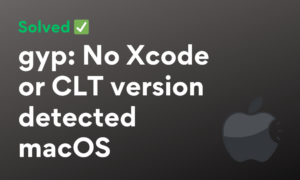
Terraform lets you automate building and managing your infrastructure with code. However, like any powerful tool, it needs to be handled responsibly. In this article, let’s dive into the world of Terraform security and explore why it’s important, the potential pitfalls to avoid, and the best practices and tools to make sure your infrastructure stays secure.
What is Terraform?
Terraform, developed by HashiCorp, is an open-source IaC tool that allows users to define and provision data center infrastructure using a high-level configuration language. Terraform enables the automation of infrastructure tasks across various cloud providers and services, making it an invaluable tool for DevOps teams.
The Importance of Terraform Security
Preventing Misconfigurations
Misconfigurations are a leading cause of security vulnerabilities in cloud environments. Terraform’s declarative approach can help standardize configurations, but without proper security practices, it can also propagate insecure settings across the infrastructure.
Ensuring Compliance
Many industries have stringent regulatory requirements for data security and privacy. Implementing security best practices in Terraform ensures that infrastructure complies with standards such as GDPR, HIPAA, and PCI DSS.
Minimizing Attack Surface
Properly secured Terraform configurations reduce the attack surface of cloud environments. By implementing least privilege principles and securing state files, organizations can mitigate the risk of unauthorized access and data breaches.
Potential Security Risks with Terraform
State File Vulnerabilities
Terraform stores the state of the infrastructure in a state file, which contains sensitive information, including resource configurations and secrets. If this file is not properly secured, it can be a target for attackers
Hardcoded Secrets
Embedding secrets, such as API keys and passwords, directly into Terraform configurations is a common mistake that can lead to security breaches. Hardcoded secrets can be easily exposed and exploited.
Insecure Defaults
Terraform modules and providers might have insecure default settings. Without careful review and customization, these defaults can introduce vulnerabilities into the infrastructure.
Inadequate Access Controls
Improper access controls can allow unauthorized users to modify infrastructure configurations, leading to potential security incidents. Ensuring that only authorized personnel can make changes is crucial.
Best Practices for Terraform Security
Here are some terraform security best practices to keep your configurations safe and your infrastructure bulletproof.
Remote State Storage
Don’t leave your Terraform state files lying around unprotected. Store them in a secure remote backend like Amazon S3, Azure Blob Storage, or HashiCorp Consul. This keeps them out of reach of attackers and ensures everyone’s on the same page when it comes to infrastructure changes.
State Encryption
Add an extra layer of security by encrypting your state files, both when they’re stored (at rest) and when they’re being moved around (in transit).
Use Modules and Providers Securely
Not all modules and providers are created equal. Before you integrate one into your project, take a good look at its default settings and make sure they align with your organization’s security policies. Don’t be afraid to customize them to fit your needs.
Secrets Management
For all your sensitive information, like passwords and API keys, avoid keeping them directly in your Terraform configuration. Instead, use a dedicated secrets management solution like HashiCorp Vault, AWS Secrets Manager, or Azure Key Vault. These act like secure vaults, keeping your secrets safe and sound.
Access Controls
Implement Role-Based Access Control to make sure only authorized users can access and manage your Terraform configurations and state files. This prevents any unauthorized access.
Automated Security Testing
Use tools like TFLint, or Checkov to give your Terraform configurations a thorough security checkup. These tools can spot potential security misconfigurations and vulnerabilities before you deploy your infrastructure.
Audit and Monitoring
Enable detailed logging for all your Terraform operations. These logs are like a historical record, showing you exactly what changes were made to your infrastructure. They can be a lifesaver if you ever need to investigate suspicious activity

